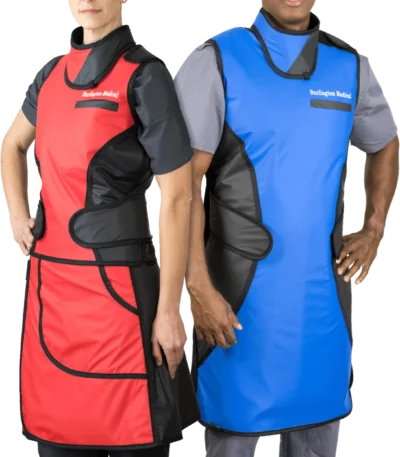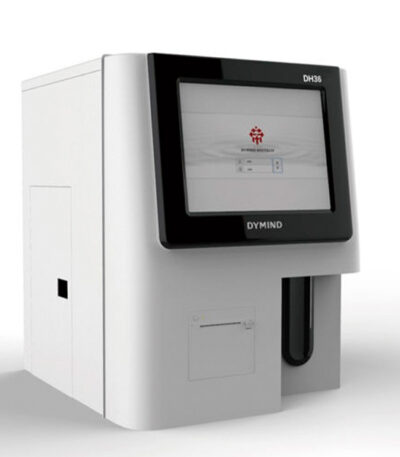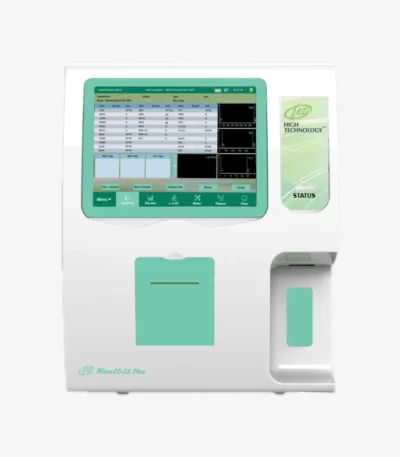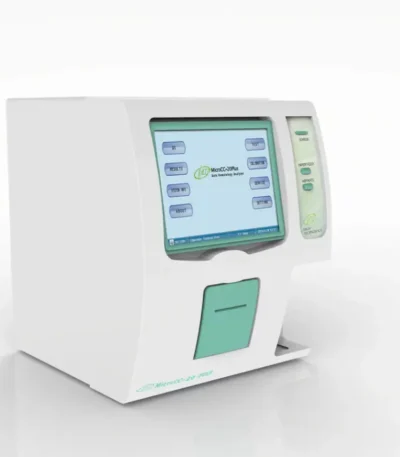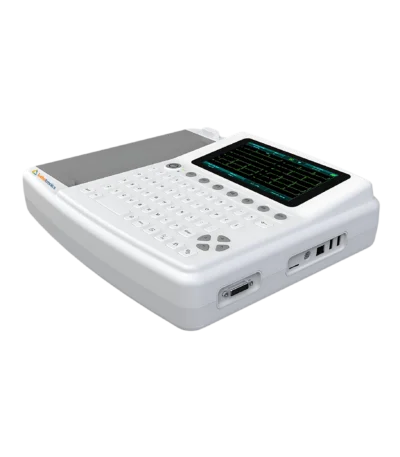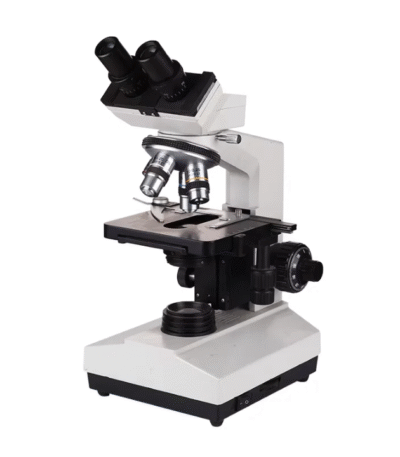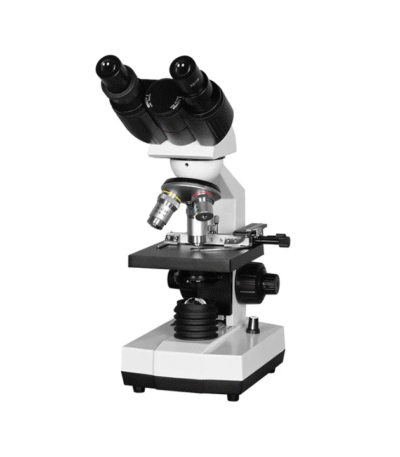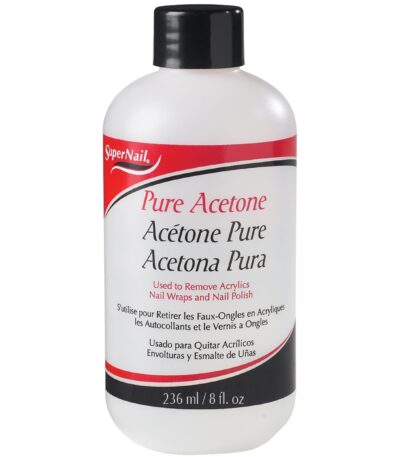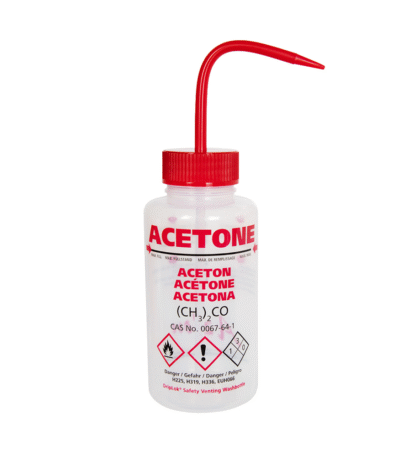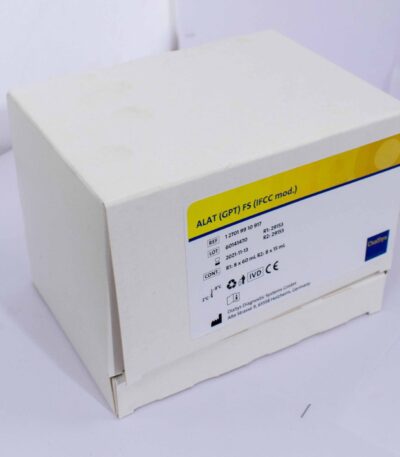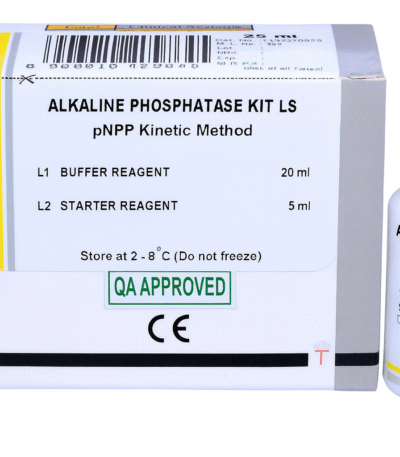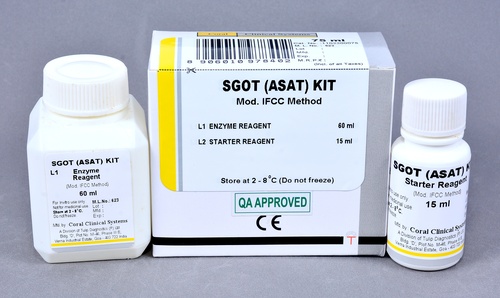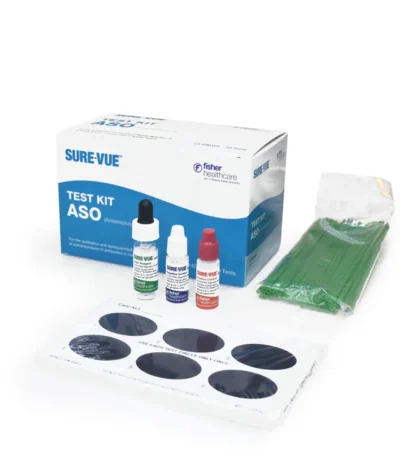Filter by price
Stock status
Showing 1–12 of 183 results
Lead Apron
Description:
The Lead Apron is a protective garment designed to shield medical personnel and patients from harmful ionizing radiation during X-ray and imaging procedures. It effectively minimizes radiation exposure to vital organs, ensuring maximum safety in radiology departments, dental clinics, operating rooms, and diagnostic centers.
3 part auto hematology analyzer (DH31)
1. Analysis Parameters
-
3-Part Differential: Differentiates white blood cells into three groups – lymphocytes, monocytes, and granulocytes.
-
Provides 20+ parameters, including:
-
WBC (White Blood Cell count)
-
RBC (Red Blood Cell count)
-
HGB (Hemoglobin)
-
HCT (Hematocrit)
-
MCV, MCH, MCHC (Red cell indices)
-
PLT (Platelet count)
-
RDW-CV, RDW-SD (Red cell distribution width)
-
PCT, MPV, PDW (Platelet indices)
-
2. Sample Handling
-
Sample Volume: Requires only 10–20 µL of whole blood.
-
Throughput: Analyzes up to 60 samples per hour.
-
Sampling Mode: Closed or open tube system (depending on configuration).
-
Automatic aspiration and cleaning minimize contamination and maintenance.
3. Operation and Interface
-
Touchscreen Display: 8–10 inch color LCD screen with intuitive menu navigation.
-
User Interface: Graphical interface supports real-time data visualization and histogram display for WBC, RBC, and PLT.
-
Built-in Thermal Printer: Provides fast, direct printing of test reports.
-
Data Storage: Stores up to 50,000 patient results for review or export.
4. Analytical System
-
Technology: Uses impedance method for cell counting and cyanide-free colorimetry for hemoglobin measurement.
-
Calibration: Fully automatic with internal quality control options.
-
Precision and Accuracy: CV <2% for RBC and HGB, ensuring consistent results.
5. Connectivity and Maintenance
-
USB / LAN Interface: Allows data transfer to laboratory information systems (LIS).
-
Automatic Cleaning and Dilution Systems: Reduces manual intervention and ensures consistent operation.
-
Low Reagent Consumption: Designed to use minimal reagents for cost-efficiency.
6. Physical and Power Specifications
-
Dimensions: Approximately 400 × 320 × 420 mm (compact bench-top design).
-
Weight: Around 20–25 kg.
-
Power Supply: AC 110–240V, 50/60Hz.
-
Operating Environment: Temperature 15–30°C; humidity ≤85%.
3 part auto hematology analyzer (DH36)
1. Analysis Parameters
-
3-Part Differential: Differentiates white blood cells into three groups – lymphocytes, monocytes, and granulocytes.
-
Provides 20+ parameters, including:
-
WBC (White Blood Cell count)
-
RBC (Red Blood Cell count)
-
HGB (Hemoglobin)
-
HCT (Hematocrit)
-
MCV, MCH, MCHC (Red cell indices)
-
PLT (Platelet count)
-
RDW-CV, RDW-SD (Red cell distribution width)
-
PCT, MPV, PDW (Platelet indices)
-
2. Sample Handling
-
Sample Volume: Requires only 10–20 µL of whole blood.
-
Throughput: Analyzes up to 60 samples per hour.
-
Sampling Mode: Closed or open tube system (depending on configuration).
-
Automatic aspiration and cleaning minimize contamination and maintenance.
3. Operation and Interface
-
Touchscreen Display: 8–10 inch color LCD screen with intuitive menu navigation.
-
User Interface: Graphical interface supports real-time data visualization and histogram display for WBC, RBC, and PLT.
-
Built-in Thermal Printer: Provides fast, direct printing of test reports.
-
Data Storage: Stores up to 50,000 patient results for review or export.
4. Analytical System
-
Technology: Uses impedance method for cell counting and cyanide-free colorimetry for hemoglobin measurement.
-
Calibration: Fully automatic with internal quality control options.
-
Precision and Accuracy: CV <2% for RBC and HGB, ensuring consistent results.
5. Connectivity and Maintenance
-
USB / LAN Interface: Allows data transfer to laboratory information systems (LIS).
-
Automatic Cleaning and Dilution Systems: Reduces manual intervention and ensures consistent operation.
-
Low Reagent Consumption: Designed to use minimal reagents for cost-efficiency.
6. Physical and Power Specifications
-
Dimensions: Approximately 400 × 320 × 420 mm (compact bench-top design).
-
Weight: Around 20–25 kg.
-
Power Supply: AC 110–240V, 50/60Hz.
-
Operating Environment: Temperature 15–30°C; humidity ≤85%.
5- Part Hematology Analyzer Micro CC-25 Plus
Key Specifications & Features
Throughput:
-
Processes approximately 60 samples per hour.
Parameters Measured:
-
Around 25 hematology parameters, including:
-
WBC total and differential counts (LYM#, LYM%, MON#, MON%, NEU#, NEU%, EOS#, EOS%, BASO#, BASO%)
-
RBC, Hemoglobin (HGB), Hematocrit (HCT)
-
Red cell indices: MCV, MCH, MCHC
-
Platelet indices: PLT, MPV, PDW, PCT, P-LCR, P-LCC
-
Additional parameters may include immature granulocytes (IG#) and ALY#.
-
Sample Volume & Types:
-
Whole blood: ~15 µL per test
-
Prediluted sample: ~20 µL
-
Supports manual sample tubes and open cups with retractable sample probe
Measurement Principles:
-
WBC 5-part differential: Laser scatter method
-
Hemoglobin: Photometry
-
RBC and Platelet counts: Electrical impedance method
Software & Connectivity:
-
10.4-inch color touchscreen display with menu navigation and virtual keyboard
-
Memory storage of up to ~100,000 results
-
Connectivity: USB ports, Ethernet (RJ-45), bidirectional LIS interface
-
Built-in thermal printer for immediate report generation
Physical & Environmental Specifications:
-
Dimensions: ~47 cm (width) × 52.5 cm (height) × 36.5 cm (depth)
-
Weight: ~35 kg
-
Power supply: 110–240 V, 50/60 Hz, ~400 VA
-
Operating environment: Temperature 10 °C–30 °C, humidity ≤85%
Reagents & Maintenance:
-
Uses three main reagents: Diff Lyse, Hgb Lyse, and Diluent, plus a Cleaner Concentrate
-
Daily maintenance is minimal; designed for ease of use in clinics or smaller labs
A 12-Channel Electrocardiograph (ECG) machine
A Microscope (CX 107)
Acetone
ALAT / ALT / GPT Reagents — Clinical Chemistry / Semi-Automated Systems
🔬 1. IFCC Kinetic Method (Standard ALT Method)
Primary Reaction
ALT catalyzes:
L-Alanine + α-Ketoglutarate
→ Pyruvate + L-Glutamate
Indicator (Coupled) Reaction
Pyruvate + NADH + H⁺
→ Lactate + NAD⁺
(catalyzed by LDH)
As ALT activity increases, NADH decreases, and absorbance at 340 nm falls.
Measurement
-
Wavelength: 340 nm
-
Method: Kinetic, ΔA/min
-
Rate proportional to ALT activity (U/L)
Albumin Reagents
🔬 1. BCG Method (Bromocresol Green)
Most widely used in routine chemistry analyzers.
Principle
Albumin binds to BCG dye in an acidic buffer forming a green-colored complex.
-
Absorbance: 600–630 nm (green complex)
-
Type: Endpoint reaction (color intensity ∝ albumin concentration)
Advantages
-
Very robust
-
Strong signal (high sensitivity)
Limitations
-
Mild positive bias in some conditions (e.g., high globulins)
🧪 2. BCP Method (Bromocresol Purple)
A more specific albumin method.
Principle
Albumin binds selectively to BCP dye in acidic buffer forming a purple complex.
-
Absorbance: 540–550 nm
-
Type: Endpoint
Advantages
-
Higher specificity than BCG
-
Less interference from globulins or acute phase proteins
Limitations
-
Slightly lower color intensity
-
More common in premium reagent lines
Alkaline Phosphatase (ALP / ALKP) Reagents
🔬 1. IFCC Kinetic ALP Method (Standard)
Principle
ALP + p-Nitrophenyl phosphate (pNPP)
→ p-Nitrophenol (yellow) + Phosphate
-
Absorbance increases as p-nitrophenol is formed.
-
The rate of increase (ΔA/min) at 405 nm is proportional to ALP activity.
Measurement
-
Wavelength: 405 nm
-
Mode: Kinetic (multiple interval readings)
-
Temperature: 37°C (IFCC standard)
🧪 2. Reagent Composition (Typical)
Most ALP kits use single-reagent or two-reagent formats.
R1 (Main Buffer Reagent)
-
Diethanolamine (DEA) buffer (high pH ~10.3)
-
Magnesium ions (Mg²⁺) — ALP cofactor
-
Zinc ions (Zn²⁺) — enzyme stabilizer
-
Surfactants
-
Preservatives
R2 (Substrate Reagent)
-
p-Nitrophenyl phosphate (pNPP)
-
Stabilizers
-
Preservatives
ASAT / AST / SGOT Reagents — Clinical Chemistry / Semi-Automated Systems
🔬 1. IFCC Kinetic Method (Standard AST Method)
Primary Reaction (AST enzyme reaction)
L-Aspartate + α-Ketoglutarate
→ Oxaloacetate + L-Glutamate
Indicator (Coupled) Reaction
Oxaloacetate + NADH + H⁺
→ Malate + NAD⁺
(catalyzed by MDH)
LDH is often included to convert pyruvate → lactate, preventing inhibition.
As AST activity increases, NADH decreases, causing a fall in absorbance at 340 nm.
Measurement
-
Wavelength: 340 nm
-
Mode: Kinetic (rate), ΔA/min
-
Rate proportional to AST activity (U/L)
ASO Test Kit
Specifications
| Content And Storage | 2°C to 8°C |
| Control Sets | Yes |
| CPT Code | 86060 |
| CE Marker | Self-declared |
| Clia Complexity | Moderate |
| Detectable Analytes | Anti-Streptolysin O (ASO) |
| Detection Method | Agglutination |
| Sample Type | Human Serum |
| Sensitivity | 200 IU/mL |
| Disposable | Single-use |
Summer health medical supplies limited.
We are happy to serve you fro all your health, medical and hospital supplies. Contact Us Here for any enquiries that you may need clarification.


